Source:
https://mitteldorf.substack.com/p/mortality-spiked-in-the-pandemic
There is still confusion about what happened during the Pandemic. The public health response was innovative, defying historic precedent. Was it effective? One reason it is hard to know is that the health records are administered by the same agency (CDC) that managed the pandemic. Death certificates are subjective, and the listed cause of death is prone to error and outright manipulation. Death counts are often reliable, even when cause of death is debatable.
The CDC has recently released death counts from 2021, and they are even higher than 2020. In addition to the deaths attributed to COVID, there were 155,000 excess deaths in 2020-21 among younger Americans. It is a reasonable conjecture that these deaths were related to the circumstances of the pandemic. Below, I lay out the numbers and explore some interpretations.
The CDC keeps track of how many people die each year, their ages, the place, and the cause of death. Data is released to the public 18 months after year end through a searchable resource at https://wonder.cdc.gov/. All-cause mortality data for 2021 was recently released. Unexplained high death rates in 2020 continued and accelerated in 2021. On top of the death burden of COVID, there were 155,000 extra deaths in people under 65. (I focus on people age 15-64, because COVID deaths are relatively rare. Only about one fifth of COVID deaths were under 65.)
Deaths in this younger age group were up 19% in 2020 compared to the average of the previous five years. In 2021, deaths were even higher, up 30% compared to the same baseline. Most of this is not accounted by COVID. Excluding COVID deaths, there is an excess of 17% in 2020 and 23% in 2021. That’s 155,000 unexplained deaths. COVID deaths in this age group were 220,000 over two years, so the unexplained deaths are two thirds of the official COVID death count. Excluding the oldest group (55-64 years), the unexplained deaths are actually greater than the COVID deaths.
Word on the Hill is that official counts of COVID deaths were overstated, so the difference becomes more dramatic and the cause more mysterious. These numbers are far outside year-to-year fluctuations (~20,000) or statistical uncertainties. 155,000 Americans is almost three Vietnam Wars. The last time younger Americans were dying at the 2021-22 rate was World War II.
Proportionally, the excess deaths were concentrated in the 25-44 age group. But the highest absolute numbers were in the oldest age group (55-64), as is almost always the case. Excess deaths among males and females were skewed 64:36, but this is actually normal; in this age range, men are dying at a much higher rate than women.
The biggest wave of excess deaths occurred in August through October of 2021. This was not a period of heavy vaccination and it is off-season for respiratory infections. It was, however a time when vaccine mandates were kicking in for students returning to school and for many employees. Denis Rancourt relates the Fall deaths to a campaign for “vaccine equity” in the rural South. The second biggest wave was December, 2020 through February, 2021. This was a time when COVID was reaching its second wave, but remember that COVID deaths are excluded in this tabulation. A speculation is that the initial release of the Pfizer vaccine was so toxic that the formula was changed within a few weeks. This hypothesis is supported by VAERS data, which were surging during these same months.
What caused 155,000 excess deaths?
This count is in addition to deaths coded COVID-19. The increase began before the vaccine rollout, so at least the 2020 portion cannot be blamed on vaccine deaths. An obvious place to look is in unintended consequences of the closures and lockdowns ordered by Federal health officials as an emergency response.
CDC categorizes deaths by cause, (but then doesn’t break this down by age or month). The top ten causes of death from 2019-21 were, in order,
Heart disease
Cancer
COVID-19
Accidents
Strokes
Lung diseases including emphysema and COPD
Alzheimer’s disease
Diabetes
Chronic liver disease and cirrhosis
Kidney failure
Some of these categories increased significantly in 2020 and 2021 compared to 2019 as a baseline. There were 75,000 excess cardiovascular deaths over the two years. Some of this may be attributed to heart attack patients forgoing emergency care because they feared COVID in the hospitals. It’s possible that vaccine deaths in 2021 were coded as heart attacks. It would be interesting to see if younger people were dying of heart attacks in 2021, but CDC Wonder does not offer this information; when you ask for cause of death, you lose all information about age, place, and timing. Deaths classed as “accident” were up by 28,000 in 2020 and a striking 52,000 in 2021. Deaths listed as “suicide” seem to be intentionally undercounted, but (surprisingly) they did not increase in 2020 or 2021.
Drug overdose deaths might be expected to increase during lockdowns. Drug overdose deaths are not listed as a separate category by CDC, but from this CDC announcement it is possible to estimate 15,000 extra deaths per year in 2020 and 2021. According to CDC policy, some of these may have been listed as “accidents”.
Excess deaths in the above table are differences compared to a 2019 baseline. Empty cells connote counts that were negative or not significantly positive.
Interpretation
A classical public health response to a pandemic was advocated by Dr David Katz, by Dr John Ioannidis, by Dr Harvey Risch, by the Great Barrington coalition, and several other prominent epidemiologists in the spring of 2020. Their proposal would have been to isolate and protect the most vulnerable, while allowing the virus to spread among young, healthy people who would almost certainly survive the disease, and would earn the herd immunity needed to end spread of the virus.
Instead, US public health agencies tried a radically new approach, constricting commerce, shuttering churches, concert halls, restaurants, and cultural institutions, encouraging millions of people to stay in their homes, masking the healthy as well as the sick, discouraging experimentation with early treatments that seemed promising while rushing vaccines through testing into mass distribution
We cannot know what events might have unfolded had these mainstream public health experts prevailed, but the results do not reflect well on choices made by our CDC, NIH and the White House task force. COVID deaths were high in 2020 despite the restrictions, and twice as high in 2021 despite the vaccines. Consequences of the lockdowns and closures were not limited to the huge economic loss ($14 trillion according to this USC study), but included indirect deaths that were higher in young people than deaths from COVID itself.
Let us encourage our public health officials to learn from these mistakes, and from the experience of other nations. Nigeria and China implemented very different pandemic policies — different from the US and different from each other. Each of these nations had vastly lower rates of COVID deaths than the US, even if you believe charges that deaths were undercounted.
After writing this, I was referred by a commenter below to the work of Denis Rancourt, a Canadian researcher. In this video he does a much more thorough job that I have done, starting with US all-cause mortality data but digging deeper by locale and interpreting through a perspective he has gained from international data.

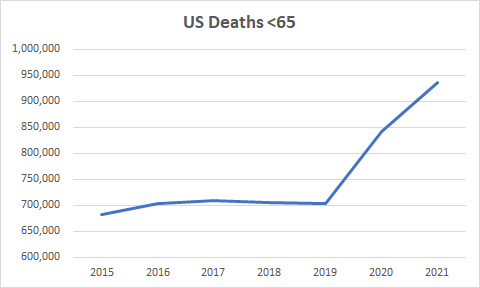
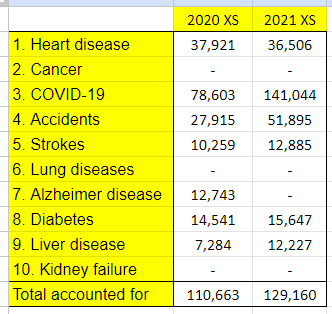
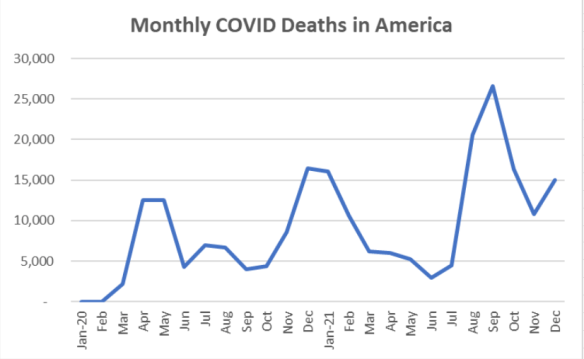
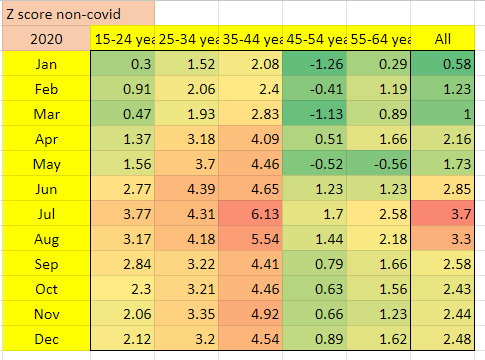
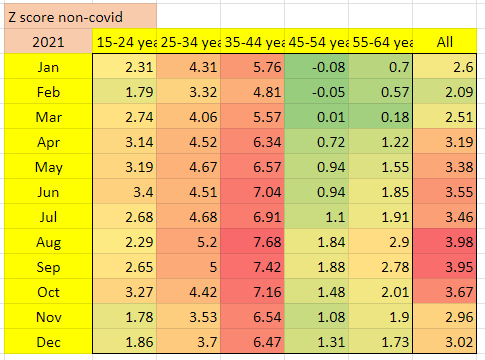

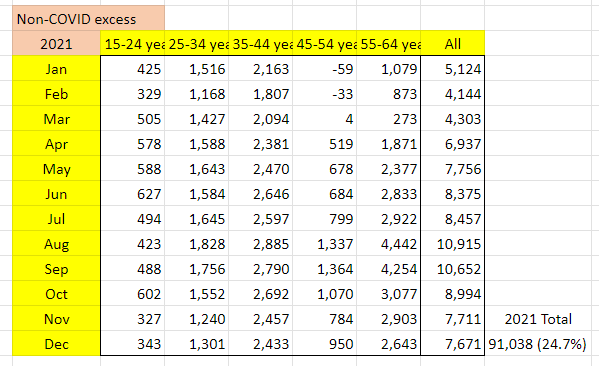
No comments:
Post a Comment
Note: only a member of this blog may post a comment.